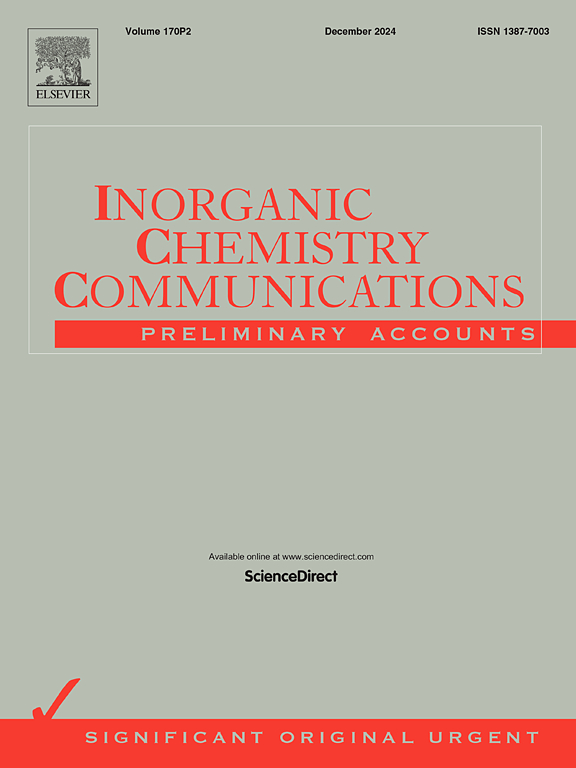Enhancing photovoltaic performance of Cu2MgSnS4-based thin-film solar cells by Fe doping: Homojunction fabrication and conductivity modulation
IF 4.4
3区 化学
Q1 CHEMISTRY, INORGANIC & NUCLEAR
引用次数: 0
Abstract
This report describes the preparation of pure Cu2MgSnS4 (CMTS) and Fe-doped Cu2Mg(1-x)FexSnS4 (x = 0.1,0.2,0.3) thin films by thermal evaporation method onto the FTO substrates. The XRD patterns of the prepared CMTS thin films showed a tetragonal structure. From Raman’s analysis, we found that all the fabricated thin films showed the existence of S-S vibration in the CuS phase. The UV–visible analysis showed that the band gap of the films decreased while increasing the Fe-concentration from 2.35 eV to 1.68 eV. In the Mott Schottky analysis, we found that pure Cu2MgSnS4 and Cu2Mg0.9Fe0.1SnS4 exhibit p-type conductivity while n-type for Cu2Mg0.8Fe0.2SnS4 and Cu2Mg0.8Fe0.2SnS4 films due to shifting the Fermi-energy level. The TEM image showed that the dopant Fe reduced the particle size from 69 to 29 nm. The carrier concentration increased from 5.01x1014 to 2.31x1015 m−3 while increasing the concentration of the dopant Fe thin films as measured from the Mott-Schottky plot. The photoconversion efficiency of FTO/CMTS/CMFTS/Au solar cell configuration is increased from 2.96 % to 6.26 % while increasing the concentration of the dopant Fe.

Fe掺杂提高cu2mgsns4基薄膜太阳能电池的光伏性能:均匀结制备和电导率调制
本文采用热蒸发法在FTO衬底上制备了纯Cu2MgSnS4 (CMTS)和掺铁Cu2Mg(1-x)FexSnS4 (x = 0.1,0.2,0.3)薄膜。制备的CMTS薄膜的XRD谱图显示为四边形结构。通过拉曼分析,我们发现所有制备的薄膜在cu相中都存在S-S振动。紫外可见分析表明,当fe浓度从2.35 eV增加到1.68 eV时,膜的带隙减小。在Mott Schottky分析中,我们发现纯Cu2MgSnS4和Cu2Mg0.9Fe0.1SnS4的电导率为p型,而Cu2Mg0.8Fe0.2SnS4和Cu2Mg0.8Fe0.2SnS4的电导率为n型,这是由于费米能级的移动。TEM图像显示,Fe的加入使颗粒尺寸由69 nm减小到29 nm。Mott-Schottky图显示,随着掺杂Fe薄膜浓度的增加,载流子浓度从5.01x1014增加到2.31x1015 m−3。随着Fe掺杂浓度的增加,FTO/CMTS/CMFTS/Au太阳能电池结构的光转换效率由2.96%提高到6.26%。
本文章由计算机程序翻译,如有差异,请以英文原文为准。
求助全文
约1分钟内获得全文
求助全文
来源期刊

Inorganic Chemistry Communications
化学-无机化学与核化学
CiteScore
5.50
自引率
7.90%
发文量
1013
审稿时长
53 days
期刊介绍:
Launched in January 1998, Inorganic Chemistry Communications is an international journal dedicated to the rapid publication of short communications in the major areas of inorganic, organometallic and supramolecular chemistry. Topics include synthetic and reaction chemistry, kinetics and mechanisms of reactions, bioinorganic chemistry, photochemistry and the use of metal and organometallic compounds in stoichiometric and catalytic synthesis or organic compounds.
 求助内容:
求助内容: 应助结果提醒方式:
应助结果提醒方式:


